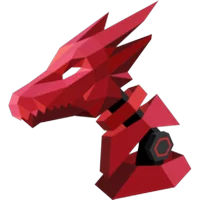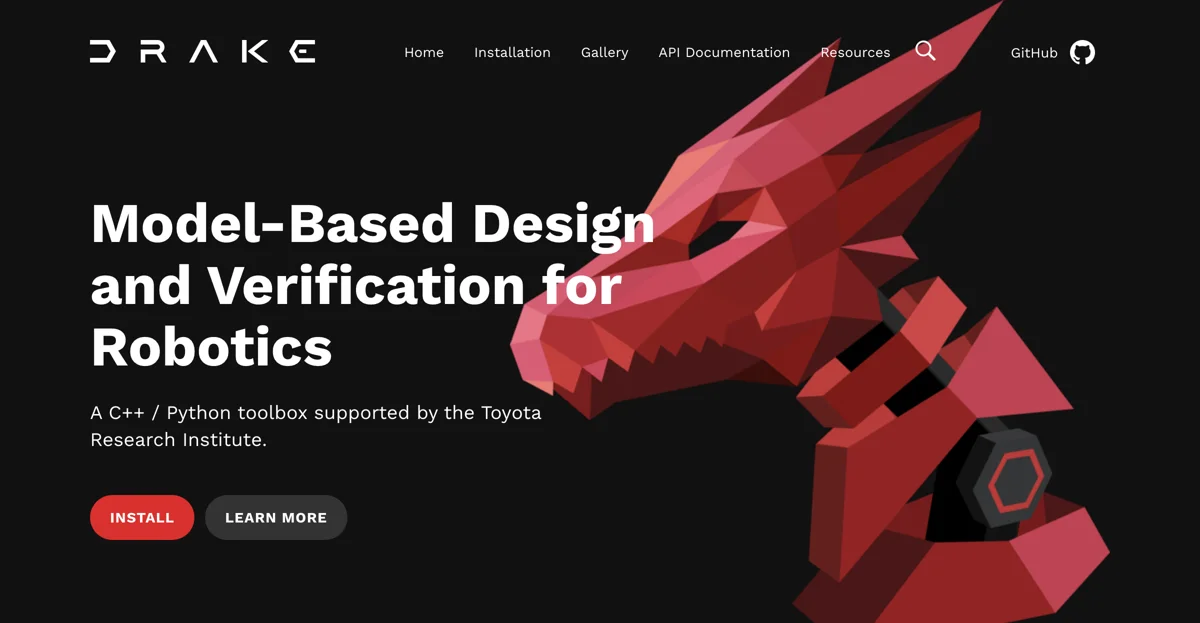Drake, developed with support from the Toyota Research Institute and originating from MIT's CSAIL, is a comprehensive C++ toolbox designed for the analysis of robot dynamics and the construction of control systems. It emphasizes optimization-based design and analysis, distinguishing itself from other simulation tools by exposing the structure in the governing equations of complex robot dynamics. This includes aspects like friction, contact, and aerodynamics, making this information accessible for advanced planning, control, and analysis algorithms. Drake also offers a Python interface to facilitate the rapid prototyping of new algorithms and aims to provide solid open-source implementations of state-of-the-art algorithms. The project encourages user contributions to enhance its coverage and utility, offering a range of tutorials, examples, and articles to help users get started. Drake's development is supported by various organizations, including DARPA, the National Science Foundation, and Amazon.com, highlighting its significance in the field of robotics and AI.

Drake
Discover Drake, the AI-driven C++/Python toolbox for robotics, offering unparalleled model-based design and verification capabilities with a focus on optimization-based analysis.

Top Alternatives to Drake
ROS
ROS is an AI-powered robotics system with essential tools
MoveIt
MoveIt is an AI-powered motion planning framework for robots
Webots
Webots is an AI-powered robot simulator that offers a comprehensive development environment
T.I.E. Industrial
T.I.E. Industrial offers comprehensive ABB robotic solutions
Dystr
Dystr is an AI-powered engineering hub that boosts team efficiency
Shield AI
Shield AI specializes in developing advanced AI pilots for next-generation aircraft, enhancing autonomous mission capabilities.
RoboDK
RoboDK is an AI-powered simulator for industrial robots, enabling offline programming and simulation without requiring programming skills.
Alpha Grill
Alpha Grill is an AI-powered robotic kitchen assistant that helps fast-casual restaurants increase efficiency and consistency in burger production.
PyRobot
PyRobot is an open-source robotics research platform that enables manipulation, navigation, and demonstrations for robotics projects.
MRPT
MRPT is an open-source toolkit offering portable applications and libraries for robotics research, released under the 3-clause BSD license.
Drake
Drake is an AI-powered C++/Python toolbox for robotics, focusing on model-based design and verification with optimization-based analysis.
Apex.AI
Apex.AI accelerates the software-defined future, focusing on safety, efficiency, and ease of development.
NVIDIA Isaac Sim
NVIDIA Isaac Sim is a robotics simulation platform that enables developers to design, test, and train AI-based robots in a virtual environment.
Covariant
Covariant is an AI-powered robotics platform that automates warehouse operations with human-level autonomy.
KommuAssist
KommuAssist is an AI-powered driving assistant that enhances safety and convenience with autonomous features.
Furhat Robotics
Furhat Robotics develops advanced humanoid robots with human-like conversational and social skills.
Robotika.ai
Robotika.ai offers autonomous AI agents for enterprise database management, enabling natural language interaction for complex database challenges.
Rerun
Rerun is an open-source platform for multimodal data handling and visualization, designed for spatial and embodied AI applications.
LuckyRobots
LuckyRobots is an AI-powered simulation platform that enables software engineers to deploy end-to-end AI models for robotics, using natural language commands.
Berkshire Grey
Berkshire Grey offers AI-enabled enterprise robotics to automate supply chain tasks, increasing productivity and reducing costs.
Sanctuary AI
Sanctuary AI develops industrial-grade humanoid robots powered by AI to address global labor challenges.